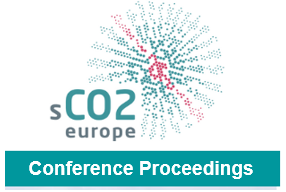Experiences of supercritical CO2 applications in refrigeration and air conditioning systems
Carbon dioxide (CO2) is a working fluid, which is suitable for various applications. Excellent heat transfer properties, especially in the supercritical area, make it attractive for thermal systems. As it is an environmentally friendly and non-flammable
fluid, it is used in larger stationary systems e.g. in supermarket refrigeration systems as well as in small cycles, e.g. for mobile air conditioning (A/C) systems. There is no risk of pollution or major environmental damage due to leakage or accidental release of fluid. In addition to power cycles, CO2 is suitable for cooling circuits for both subcritical (liquid-gas phase change) and transcritical applications. The latter includes supercritical heat rejection and subcritical heat absorption. Therefore, CO2 refrigeration systems and their components, e.g. compressors, have special design requirements. They need to be specially adapted to the fluid properties such as pressures above 10 MPa and pressure differences up to 8 MPa. The efficiencies of
refrigeration systems must be competitive to those of conventional refrigerants. This requires advanced system designs, which will be presented. Finally, possible synergies between CO2 power systems and CO2 refrigeration and heat pump systems will be discussed.
fluid, it is used in larger stationary systems e.g. in supermarket refrigeration systems as well as in small cycles, e.g. for mobile air conditioning (A/C) systems. There is no risk of pollution or major environmental damage due to leakage or accidental release of fluid. In addition to power cycles, CO2 is suitable for cooling circuits for both subcritical (liquid-gas phase change) and transcritical applications. The latter includes supercritical heat rejection and subcritical heat absorption. Therefore, CO2 refrigeration systems and their components, e.g. compressors, have special design requirements. They need to be specially adapted to the fluid properties such as pressures above 10 MPa and pressure differences up to 8 MPa. The efficiencies of
refrigeration systems must be competitive to those of conventional refrigerants. This requires advanced system designs, which will be presented. Finally, possible synergies between CO2 power systems and CO2 refrigeration and heat pump systems will be discussed.
Vorschau

Zitieren
Rechte
Nutzung und Vervielfältigung:
Dieses Werk kann unter einer Creative Commons Namensnennung 4.0 Lizenz (CC BY 4.0)
Creative Commons Namensnennung 4.0 Lizenz (CC BY 4.0)
genutzt werden.
